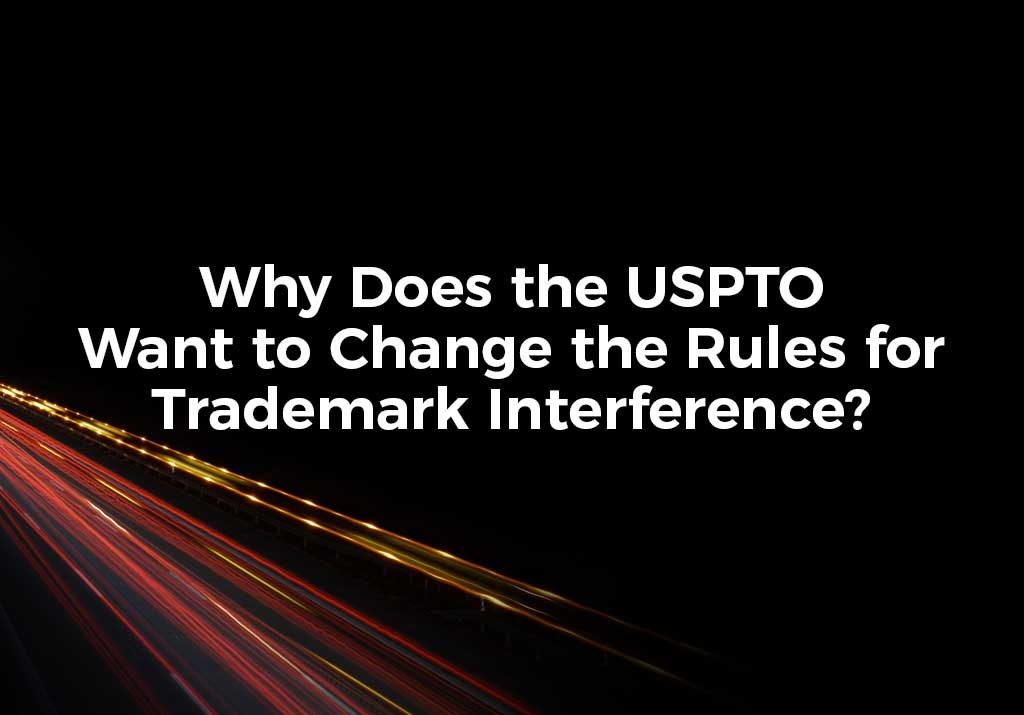On October 18, 2017, the United States Patent and Trademark Office (USPTO) published a notice to the Federal Register, titled, “Removal of Rules Governing Trademark Interferences.” In that notice, the USPTO outlined a series of updates to existing rules for trademark interference proceedings. Before delving into the reasons for and consequences of the USPTO’s proposed rule changes, it will be beneficial to review the current backdrop of trademark interference proceedings.
What are the Existing Rules for Trademark Interference Proceedings?
Under 15 U.S.C. 1066, a trademark interference proceeding is an action where the Trademark Trial and Appeal Board (TTAB) reviews conflicting applications for trademark registration. The TTAB determines which trademark applicant, if any, should be granted registration for its desired mark.
As outlined in 37 CFR 2.91(a), only the Director of the USPTO can grant a petition for trademark interference. Furthermore, the Director will only approve such a request under extraordinary circumstances that would lead to undue prejudice without trademark interference proceedings.
Generally speaking, the option to file a notice of opposition or cancellation removes the possibility of undue prejudice. So long as those standard avenues of challenging a trademark registration remain available, trademark interference proceedings are rarely appropriate.
Why Does the USPTO Want to Change the Rules for Trademark Interference?
Pursuant to Executive Order 13777, the USPTO engaged in a review effort to remove “outdated, unnecessary or ineffective” processes and procedures. In its analysis, the USPTO found that trademark interference proceedings were largely unnecessary. In terms of historical data, the USPTO maintains records for trademark interference proceedings going back to as early as 1983. For the period of 1983 to 2017, the USPTO processed approximately one petition per year for trademark interference. Additionally, the USPTO denied almost every such petition. The USPTO only approved three petitions for trademark interference, all of which occurred in 1985.
Overall, the USPTO determined that trademark interference proceedings are extremely rare, with an approval rate of almost zero. Given that context, the USPTO reasoned that continued administration of trademark interference requests was not an efficient or streamlined use of agency resources.
What Will the Future Look Life for Trademark Interference Proceedings?
To ensure an efficient and streamlined use of agency resources, the USPTO proposes to eliminate the following provisions concerning trademark interference:
- 2.91 – Declaration of interference;
- 2.92 – Preliminary to interference;
- 2.93 – Institution of interference;
- 2.96 – Issue; burden of proof; and
- 2.98 – Adding party to interference.
Essentially, the USPTO will remove all standard procedural rules and regulations concerning trademark interference. The USPTO will not consider trademark interference a standard option for challenging trademark registration. Despite the removal of the provisions listed above, the USPTO underlines that trademark interference proceedings can still occur when necessary. Under 37 CFR 2.146, the Director can consider petitions for trademark interference under extraordinary circumstances.
Do You Need Legal Counsel from a Proficient Trademark Lawyer?
The Rapacke Law Group has time-tested proficiency in the field of trademark law. If you need legal counsel concerning trademark interference, international trademarks, or related trademark matters, please do not hesitate to reach out to us for assistance. Contact us today for a free initial consultation.



